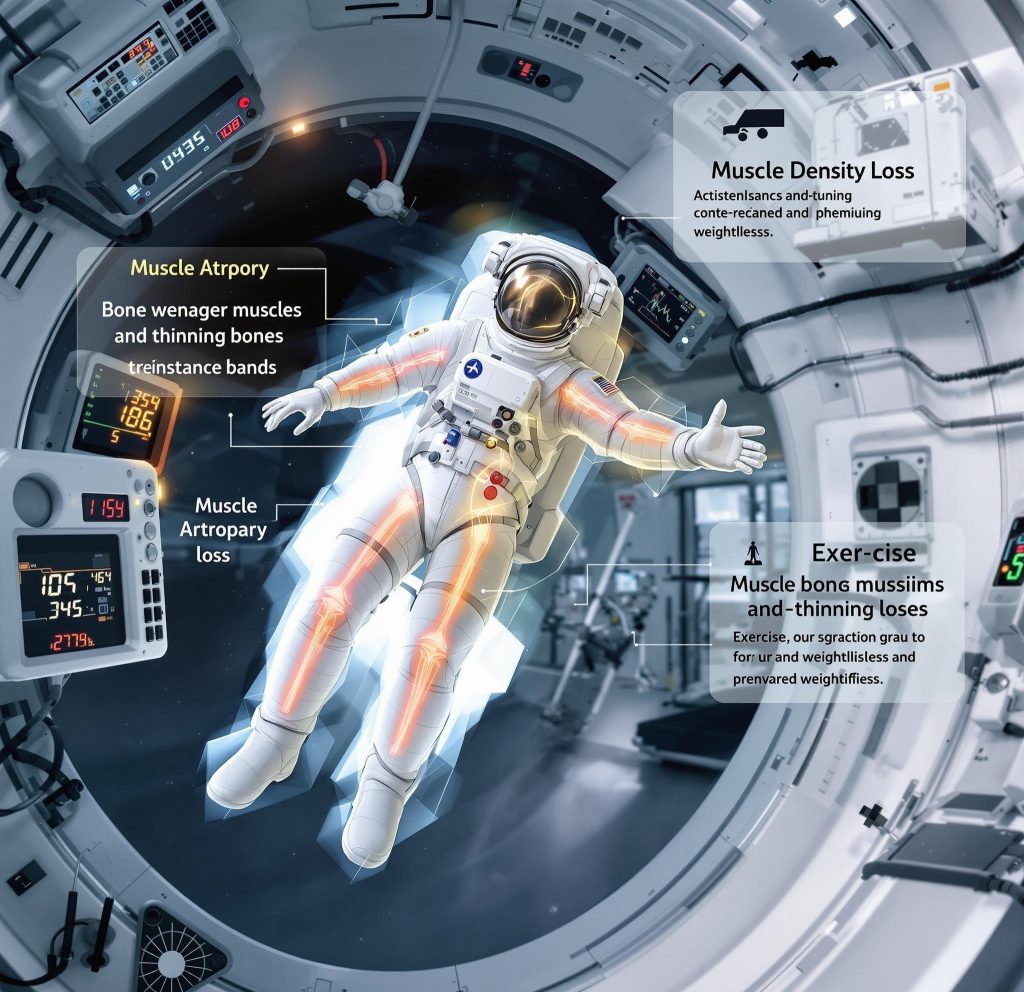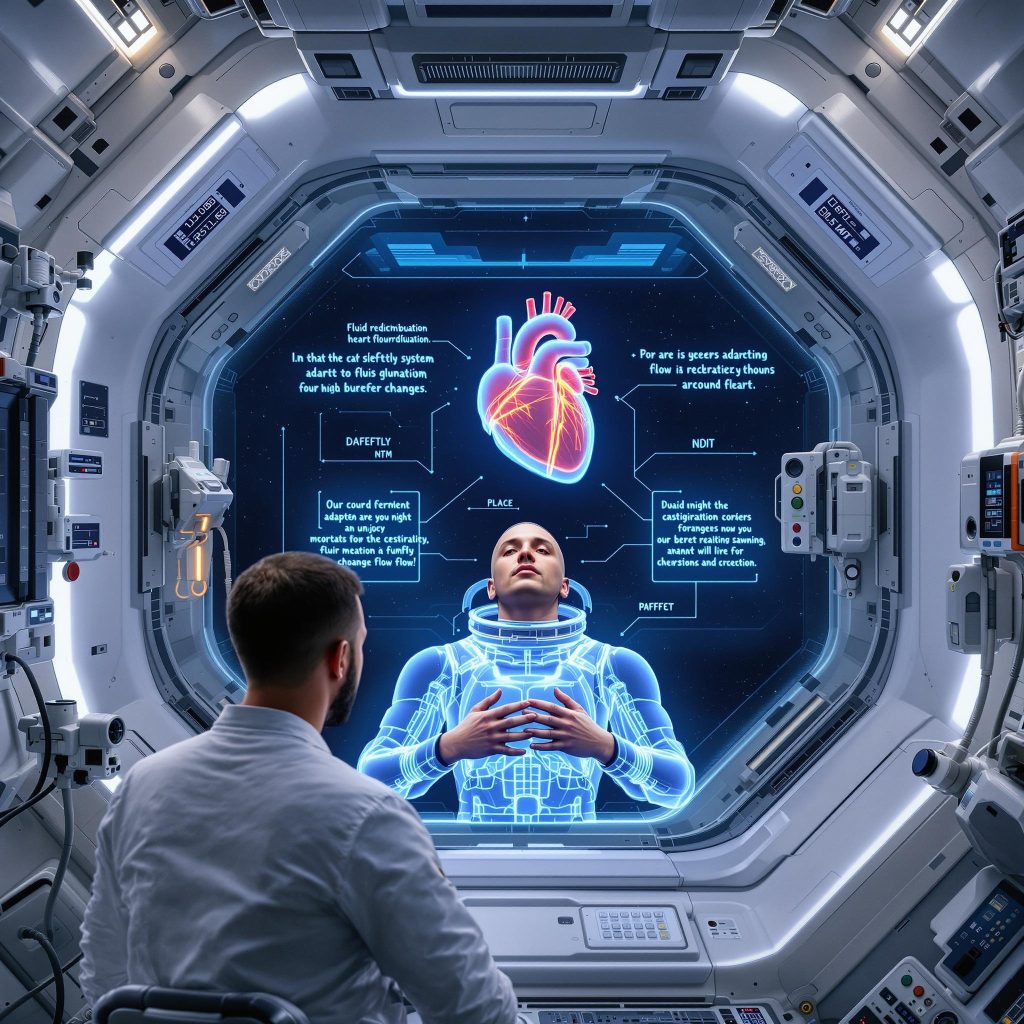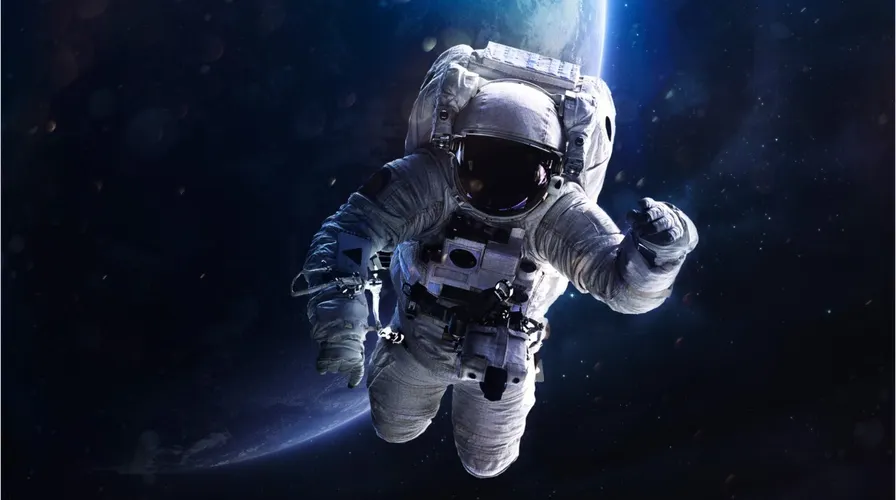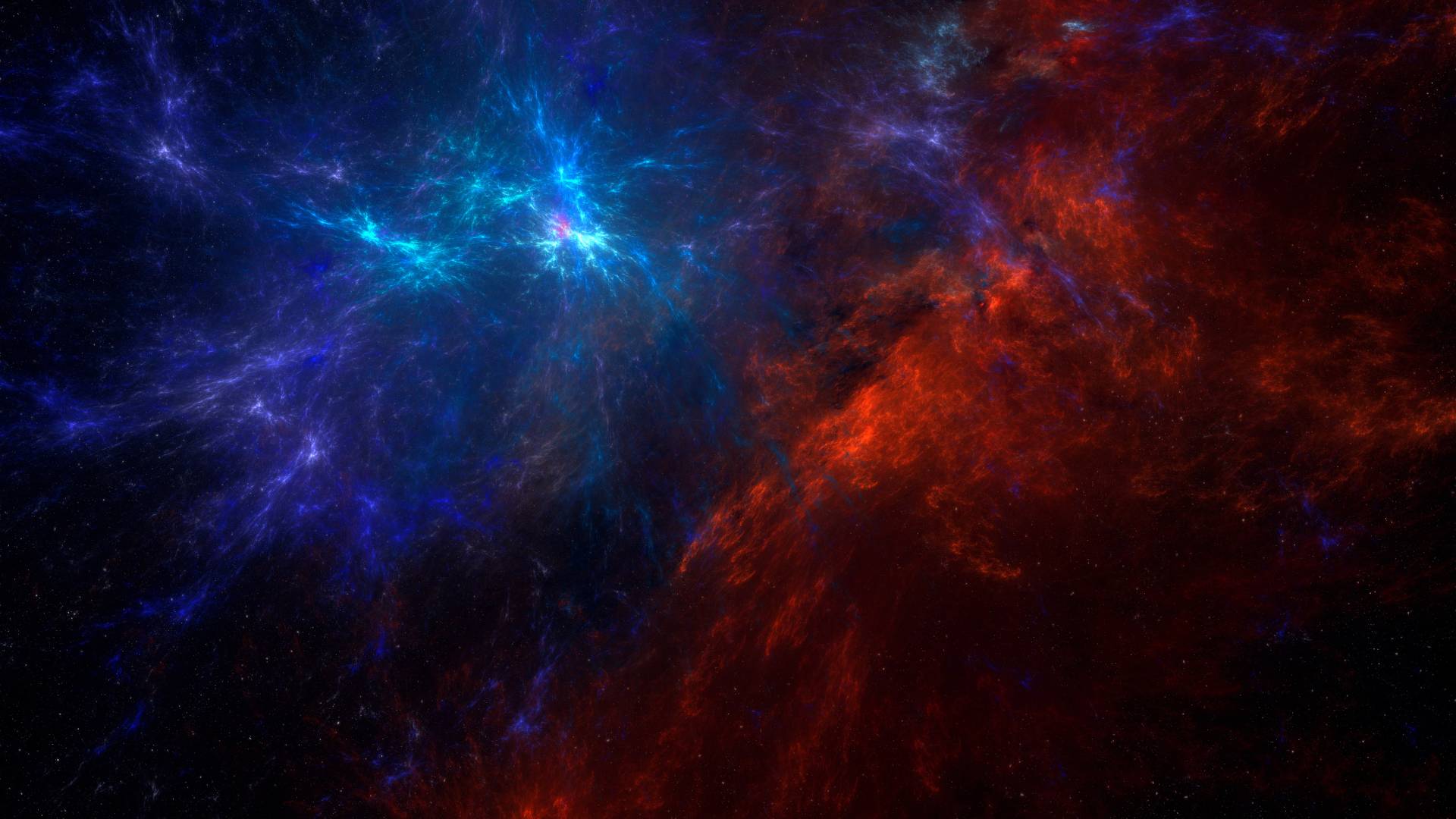The human body in space undergoes remarkable changes due to microgravity, radiation, and isolation. From muscle and bone loss to vision changes and cardiovascular effects, space exploration pushes human adaptability to its limits. Discover how astronauts prepare for these challenges and what scientists are learning to ensure safe and successful missions beyond Earth. Stay with Spaceyv
When humans venture into space, their bodies are subjected to a range of conditions vastly different from those on Earth. From microgravity to cosmic radiation, space is a challenging environment that forces the body to adapt in fascinating and sometimes unexpected ways. This article delves into the physical and physiological changes that astronauts experience while living and working in space.
1. Microgravity and Its Effects Human Body in Space
Microgravity has profound effects on the human body in space, as the absence of Earth’s gravitational pull alters basic physiological processes. Muscles weaken due to reduced use, causing atrophy, while bones lose density at a rate of 1-2% per month, similar to osteoporosis. Fluids in the body shift upwards, leading to puffiness in the face and pressure on the eyes, which can cause vision problems.
The cardiovascular system adjusts, with the heart working less, leading to potential muscle weakening. Digestion slows, and nutrients may not be absorbed as efficiently.
The human body in space also experiences challenges like immune system suppression and disrupted sleep cycles due to the lack of a natural day-night rhythm. Understanding these effects is crucial for preparing astronauts for long-term missions and protecting their health during extended space exploration.

Muscle Atrophy
- In the absence of gravity, muscles that support movement and posture, such as those in the back and legs, aren’t used as much.
- Astronauts can lose up to 20% of their muscle mass during a long-term mission.
- Regular exercise, including resistance and aerobic workouts, is vital to counteract this effect.
Bone Density Loss
- Bones lose minerals in microgravity, leading to a condition similar to osteoporosis.
- Astronauts can lose 1-2% of bone mass per month in space, particularly in weight-bearing bones like the hips and spine.
- Calcium and vitamin D supplementation, along with exercise, helps mitigate bone loss.
Fluid Redistribution
- Without gravity pulling fluids downward, bodily fluids shift upward toward the chest and head.
- This causes puffy faces, stuffy noses, and increased intracranial pressure, which can affect vision.
- Some astronauts experience “space blindness,” a temporary condition caused by the flattening of the eyeballs.
Read more : How Space Weather Impacts Life on Earth
2. Cardiovascular System Changes
In the microgravity environment of space, the cardiovascular system undergoes significant adaptations. Blood and fluids no longer pool in the lower body, causing them to shift upward, leading to facial puffiness and increased pressure in the head. This redistribution reduces the workload on the heart, causing it to weaken slightly over time.
Astronauts may experience orthostatic intolerance upon returning to Earth, struggling to stand without feeling dizzy or faint. Additionally, microgravity can alter blood vessel function, affecting overall circulation.
These changes highlight the need for tailored exercises and monitoring to maintain cardiovascular health during and after space missions.
Heart Function
- The heart doesn’t need to pump as hard to circulate blood in microgravity, leading to slight muscle weakening.
- Upon returning to Earth, astronauts may experience orthostatic intolerance, where they struggle to stand without feeling dizzy.
Blood Flow Redistribution
- Blood tends to pool in the upper body, increasing pressure in the head. This can contribute to headaches and increased pressure on the optic nerve.
3. Cosmic Radiation and Its Risks
DNA Damage
- Space is filled with high-energy radiation from the Sun and distant stars.
- This radiation can damage DNA, increasing the risk of cancer and other long-term health effects.
Protective Measures
- Spacecraft are equipped with radiation shielding, and astronauts are trained to seek shelter during solar storms.
- Researchers are exploring better shielding materials and wearable radiation sensors.
4. Psychological and Behavioral Challenges
Isolation and Confinement
- Long missions in small, enclosed spaces can lead to feelings of isolation and stress.
- Team dynamics, cultural differences, and the pressure to perform can impact mental well-being.
Coping Mechanisms
- Structured schedules, regular communication with family, and psychological support are crucial.
- Astronauts often engage in recreational activities like reading or watching movies to relax.
5. Immune System Suppression
In the microgravity environment of space, the immune system becomes less effective, leaving astronauts more vulnerable to infections. Stress from isolation, disrupted sleep cycles, and radiation exposure can further weaken immune responses. Changes in white blood cell function and reduced ability to fight off pathogens have been observed during missions. Reactivation of dormant viruses, such as herpes, is also common. Understanding immune system suppression is vital to developing countermeasures for long-term space exploration.
- The immune system becomes less effective in space, making astronauts more susceptible to infections.
- Dormant viruses, like herpes, can reactivate during space missions.
6. Impact on Vision
Spaceflight-Associated Neuro-Ocular Syndrome (SANS)
- This condition, caused by fluid shifts, leads to changes in the shape of the eye and increased pressure on the optic nerve.
- Symptoms include blurry vision and difficulty focusing.

7. Sleep and Circadian Rhythms
- Without a natural day-night cycle, astronauts often struggle with disrupted sleep patterns.
- Spacecraft lighting is adjusted to mimic Earth’s day-night cycle, and astronauts use sleep aids like melatonin or eye masks.
8. Digestive System Adjustments
- In microgravity, food and fluids don’t settle as they do on Earth, affecting digestion and nutrient absorption.
- Astronauts must consume a balanced diet to prevent deficiencies and maintain energy.
9. Post-Space Recovery
Rehabilitation
- Upon returning to Earth, astronauts face challenges as their bodies readjust to gravity.
- They undergo extensive physical therapy to rebuild muscle strength and recover bone density.
- Vision, balance, and cardiovascular function may take weeks or months to normalize.
10. Long-Term Implications
- Prolonged exposure to space conditions could lead to permanent health effects, including vision changes, cardiovascular strain, and increased cancer risks.
- NASA and other space agencies are conducting ongoing research to understand and address these challenges.
Conclusion
The human body is remarkably adaptable, but space travel presents unique challenges that require careful preparation and mitigation strategies. Understanding these effects is crucial as humanity embarks on longer missions, such as journeys to Mars or permanent lunar bases. By studying how space impacts the body, scientists can develop innovative solutions to protect astronauts and pave the way for the next frontier of exploration.
References
NASA – Human Health and Performance in Space:
https://www.nasa.gov/hrp
European Space Agency (ESA) – Effects of Space on the Human Body:
https://www.esa.int
National Institutes of Health (NIH) – Microgravity and Its Effects:
https://www.nih.gov
Scientific American – The Challenges of Space Travel:
https://www.scientificamerican.com
Journal of Applied Physiology – Physiological Adaptations to Spaceflight:
https://journals.physiology.org



